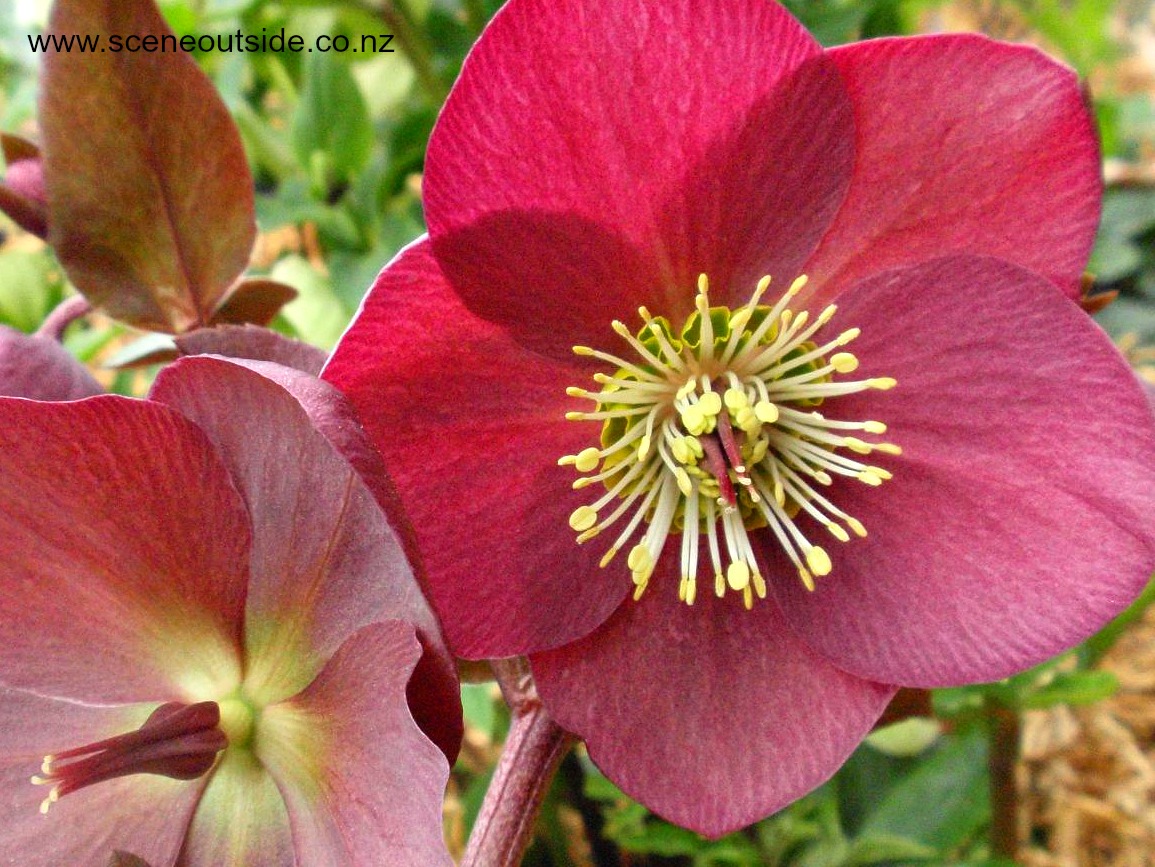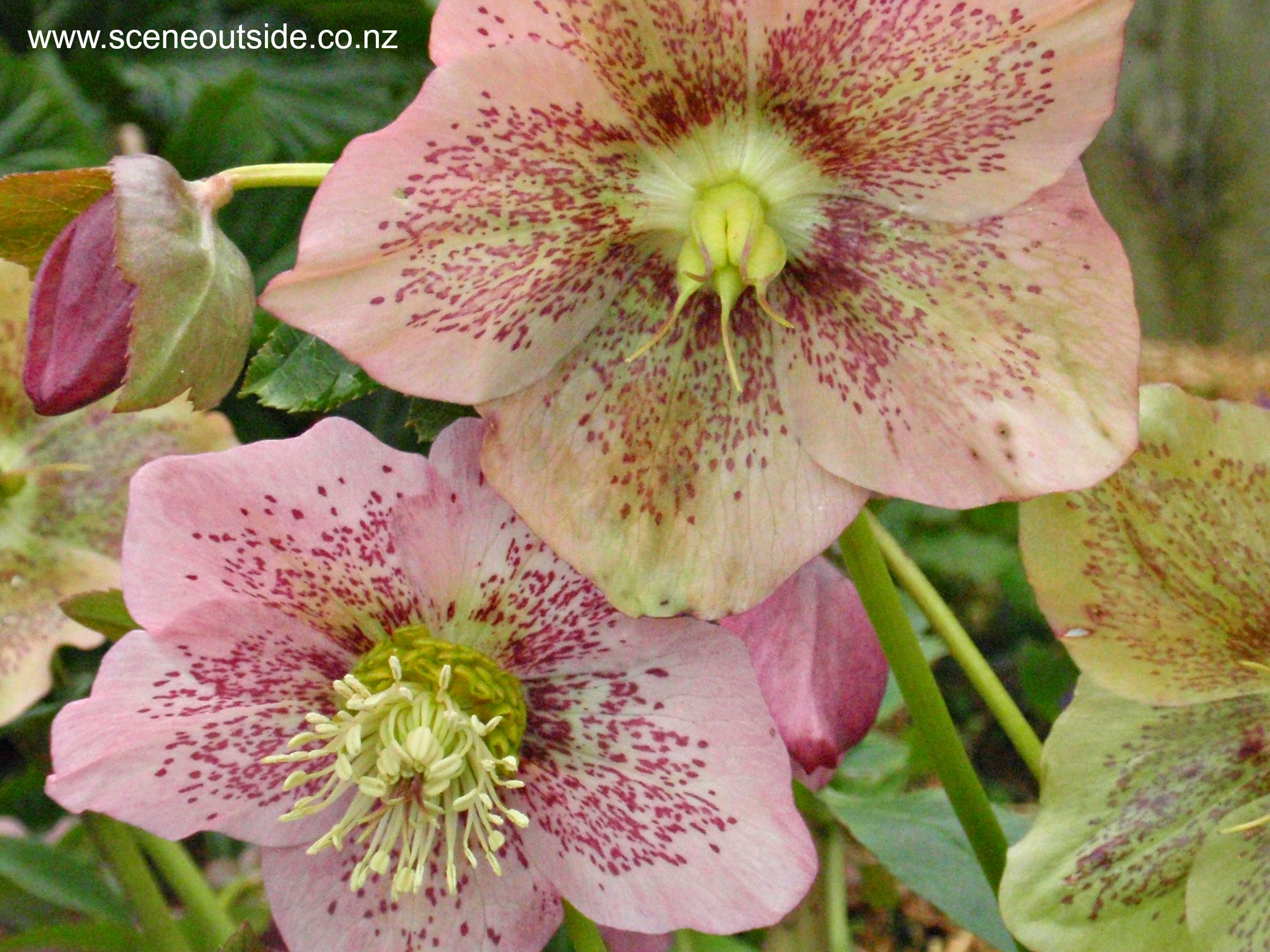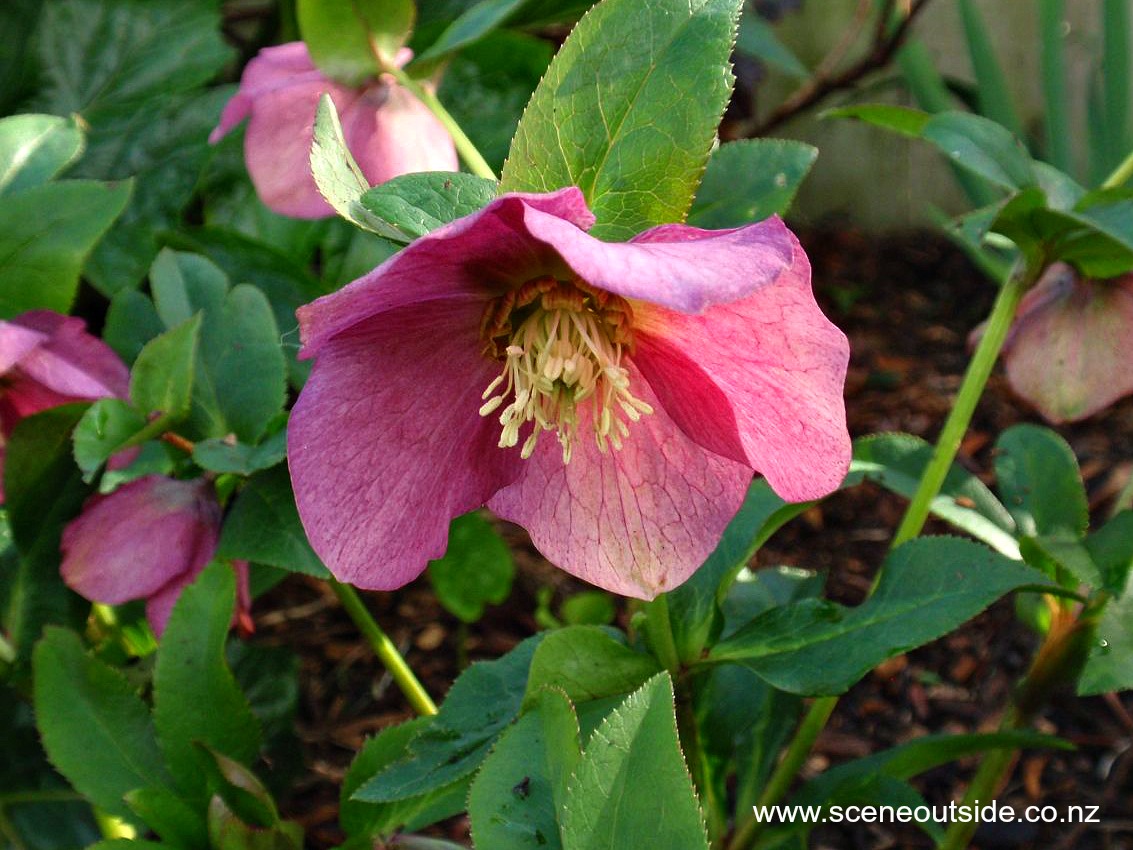


Helleborus orientalis
Lenten rose, Winter rose, Lenten hellebore, Oriental hellebore
Clump-forming, evergreen, relatively slow growing perennial with palmately compound leaves and nodding flowers during winter. Native to Greece, Turkey and around the Black Sea. Leathery dark green leaves with 7 to 9 coarsely toothed leaflets, 15-25 cm long. Flowers (5-8 cm across) resemble single rose flowers, and are held above the foliage in loose clusters. Colours range from pure white to pink or dark red, often spotted. All parts are poisonous. Sap may cause skin irritation. In cold climates, Helleborus orientalis is semi-evergreen.
Most hellebores sold as Helleborus orientalis belong to a large group of hybrids, now collectively known as Helleborus x hybridus. Many of the latter have their own name. For example, the stunning deep red flowers in the close-up photograph belong to the hybrid Helleborus 'Anna's Red'.
Prefers partial or full shade and moist, well-drained neutral or slightly alkaline soil. Tolerates drier conditions once established. Dislikes being disturbed, so may take a while to recover after transplanting. Naturalises in suitable climates. Plants are propagated from seed or by dividing large plants in late summer. Old, unsightly leaves can be removed in autumn before the flowers and new leaves appear.
Great ground covering plant for shady gardens. Since the flowers are quite subtle and delicate both in colour and size, they are best used en masse in smaller areas. The leaves contrast beautifully with hostas or ferns. Suitable as cut flowers, but flowers last longer when you allow them to float in a shallow bowl of water.
Type of plant
Herbaceous - PerennialSize
0.4 m tall, 0.4-0.6 m wideLandscape Use
flower display and ground cover in shade or woodland gardens, indoor flower displaySpecifications
- Temperature: Hardy
- Light: Low Medium
- Moisture: Medium
- Soil: Medium Heavy
- Wind tolerance: Low



